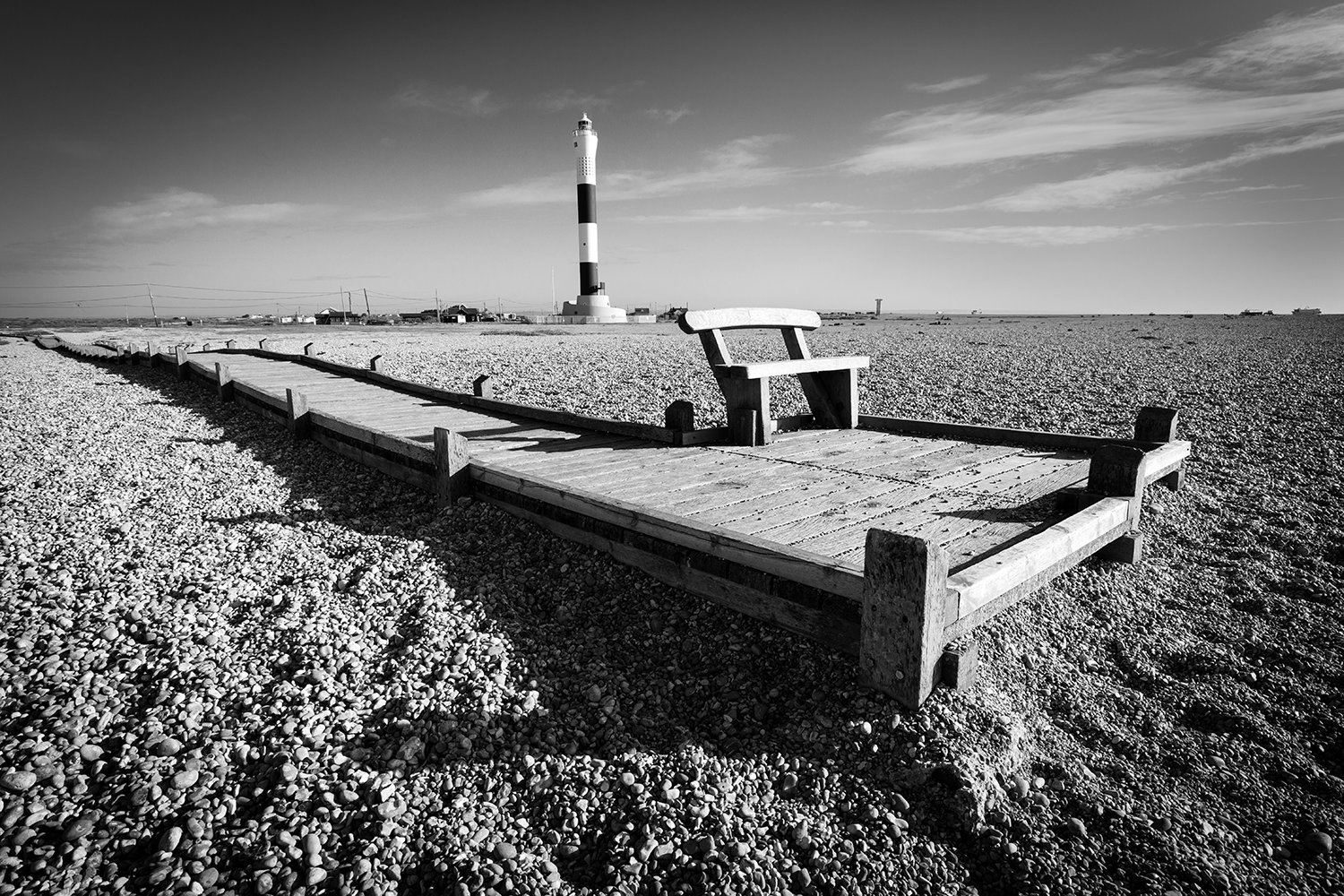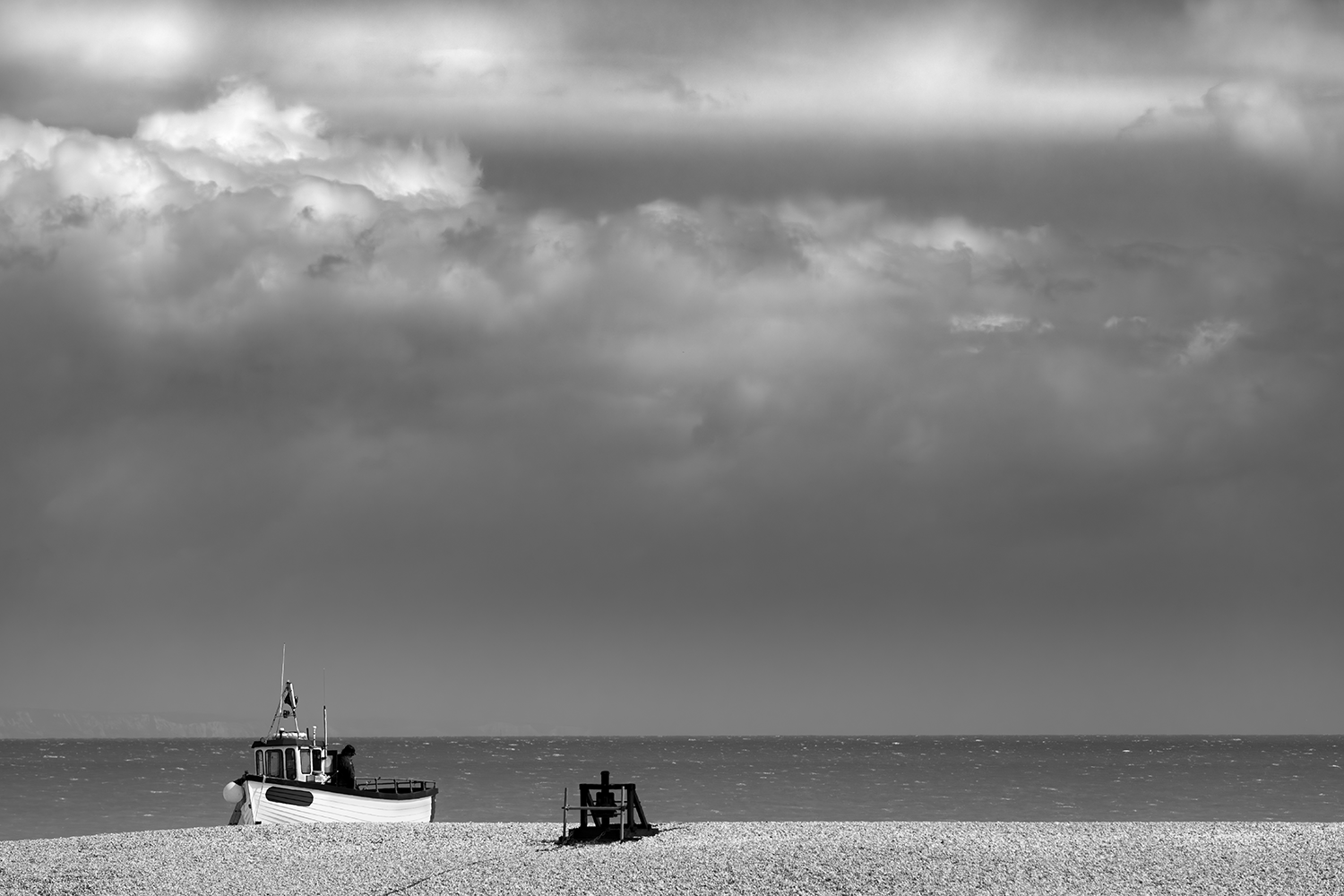Dungeness Beach is located on the Kent coast and has to be one of the oddest places on the English coastline that I have visited. Dungeness I suppose is a shared community; there are people who still live in the strange huts and shacks close to the location of two nuclear power stations and the beach. It is classed as an important ecological site and also the UK's only designated ‘desert’ according to the Met Office. Here you will see shingle and pebble beaches, stark beauty and unique eco systems.
The shoreline at Dungeness is scattered with a few remaining working boats but also a number of abandoned fishing boats which are in various states of decay and have in the main gradually fallen apart over the years. It has all the ingredients to make it a perfect location for a day's photography.
On getting out of my car, I was told almost immediately by a resident in one of the old shacks that in the last three years several of the redundant railway carriages and huts on the beach have been gentrified - very few of the relics remain, most having been dismantled and skipped. I haven’t photographed the dwellings that are obviously still occupied today.
The cottages converted from the old carriages are a reminder that the old Southern Railway used to operate in this area. But what does still exist today is the Romney Hythe & Dymchurch Railway, also called “Kent’s Mainline in Miniature”. The world famous one-third full size steam & diesel locomotives have powered their way along 13½ miles of track from the Cinque Port town of Hythe terminating in Dungeness since 1928.
It was a stunningly beautiful day, particularly for black and white photography. It started with vibrant blue skies and fluffy white clouds that would rapidly change into moody black skies with incredible flashes of fleeting sunlight. It made for some nice contrasty images in this most unusual desert between the sea and the land.













